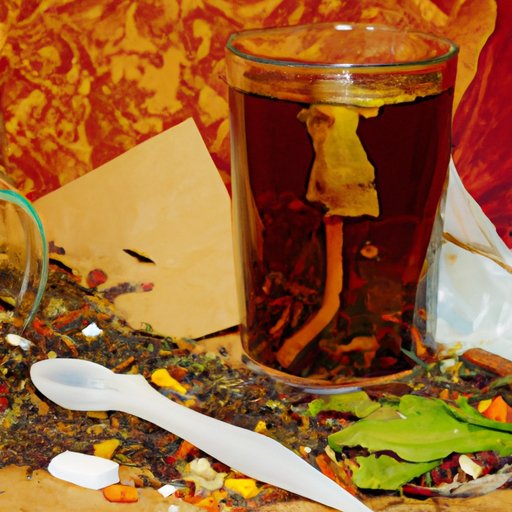I. Introduction
Mucus, also known as phlegm, is a natural substance produced by the respiratory system to protect the lungs from irritants and infections. However, an excessive amount of mucus in the chest can lead to discomfort and difficulty in breathing. This article will explore different methods for relieving mucus in the chest, including home remedies, medications, changing your diet, chest physiotherapy, herbal teas, and nasal irrigation.
II. Home Remedies
Natural remedies for breaking up mucus in the chest can be found in your kitchen. For example, honey has natural antibacterial properties that can help fight infections, while also soothing the throat and reducing coughing. Ginger and garlic also have anti-inflammatory properties that can help break down mucus in the chest. Simply add these ingredients to your tea or soup for maximum benefit.
III. Medications
When home remedies are not enough, medications can also help reduce mucus production. Expectorants are medications that help loosen mucus in the chest by thinning it out, making it easier to cough up. On the other hand, cough suppressants can be used to suppress a cough that is caused by irritation from mucus in the chest. It’s essential to understand the difference between these medications and how to use them as prescribed by a healthcare professional.
IV. Changing Your Diet
The food we eat can have a significant impact on our respiratory system. Certain foods, such as dairy and fried foods, can increase mucus production and make symptoms worse. On the other hand, eating foods rich in antioxidants, such as fruits and vegetables, can help reduce inflammation and mucus production in the chest. Drinking lots of water and staying hydrated is also essential to keep mucus thin and easier to cough up.
V. Chest Physiotherapy
Chest physiotherapy is a technique used to help mobilize mucus in the lungs and provide relief from chest congestion. Two common techniques are postural drainage and percussion. Postural drainage involves positioning the body in such a way that mucus can drain from the lungs, while percussion involves gently tapping on the chest to help loosen mucus. A healthcare professional can assist in demonstrating these techniques.
VI. Herbal Teas
Herbal teas are known for their anti-inflammatory properties and can help soothe symptoms of mucus build-up in the chest. Green tea, for example, has natural antioxidants that reduce inflammation. Chamomile tea can aid in sleep and relieve inflammation; peppermint tea has a natural cooling effect that can soothe a sore throat and reduce congestion. Drinking warm tea can also provide relief to a quick cough.
VII. Nasal Irrigation
Nasal irrigation with a neti pot can help treat excessive mucus production in the chest by removing mucus from the nasal passages. It involves using a saline solution to flush out the sinuses, relieving congestion and promoting sinus health. It’s essential to follow instructions carefully to avoid any discomfort or infections.
VIII. Conclusion
Mucus in the chest is a common problem that can affect anyone. Fortunately, there are many ways to relieve this discomfort, ranging from home remedies to nasal irrigation. However, it’s essential to seek medical attention if symptoms persist. Keep in mind that prevention is always better than a cure, so it’s crucial to avoid known triggers and maintain healthy habits. Incorporating a balanced diet with regular exercise can be beneficial to both respiratory and overall health.
